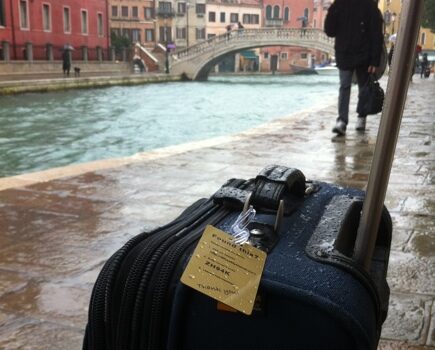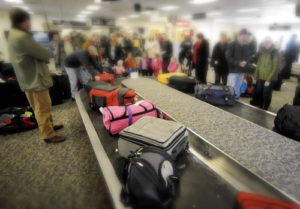9 Tips to Minimize The Chance of Losing Your Checked Luggage

Luggage - instant notification
 Like it or not, many of the bags that appear on conveyor belts in airport baggage halls look eactly like yours!
Like it or not, many of the bags that appear on conveyor belts in airport baggage halls look eactly like yours!
So if you’re travelling this summer, take the time to clearly label your bags inside and out to make them easy to identify.
Keep your bags – and your identity – safe with these suggestions:
- It’s OK to include your destination airport and hotel on external tags, but exclude your home address. Anyone seeing it will know it’s safe to break into your empty home while you’re away.
- Print your name and a contact number on a sheet of paper placed inside your bag on top of your belongings. In general, include as little personal information as possible – you’d be surprised what a quick social media search can reveal about you and your plans from just your name.
- Rather than risk identity theft or becoming a target, why not use privately-registered security tags such as the ones provided by WhosMyOwner? That way you can be contacted securely and easily in seconds, without publishing any of your personal details.
- Personalise your bags using distinctive stickers, ribbons, Day-Glo tape or unique tags to make them easy for you to spot even across a baggage hall.
- Take photos of your bags, showing any distinctive customisations, to make them easy to describe to your airline or baggage tracing service.
- If possible, keep a note of each bag’s manufacturer, model number, style, pattern and colour names and its capacity in litres. You’ll be asked for all these details if you need to complete a luggage tracing form. Having them prepared in advance saves time, ensures accuracy and helps tracing services enormously.
- Keep your luggage notes and photos in a folder on an online file-storage site like Dropbox. That way you can send your insurance company or luggage tracing service a link that will help locate your bags much quicker.
- Remove any old airline tags and stickers from previous trips before you travel so as not to confuse baggage handlers.
And finally, if you’re travelling internationally, keep any written instructions simple and include translations in a couple of other languages – people trying to help won’t necessarily understand your language!
